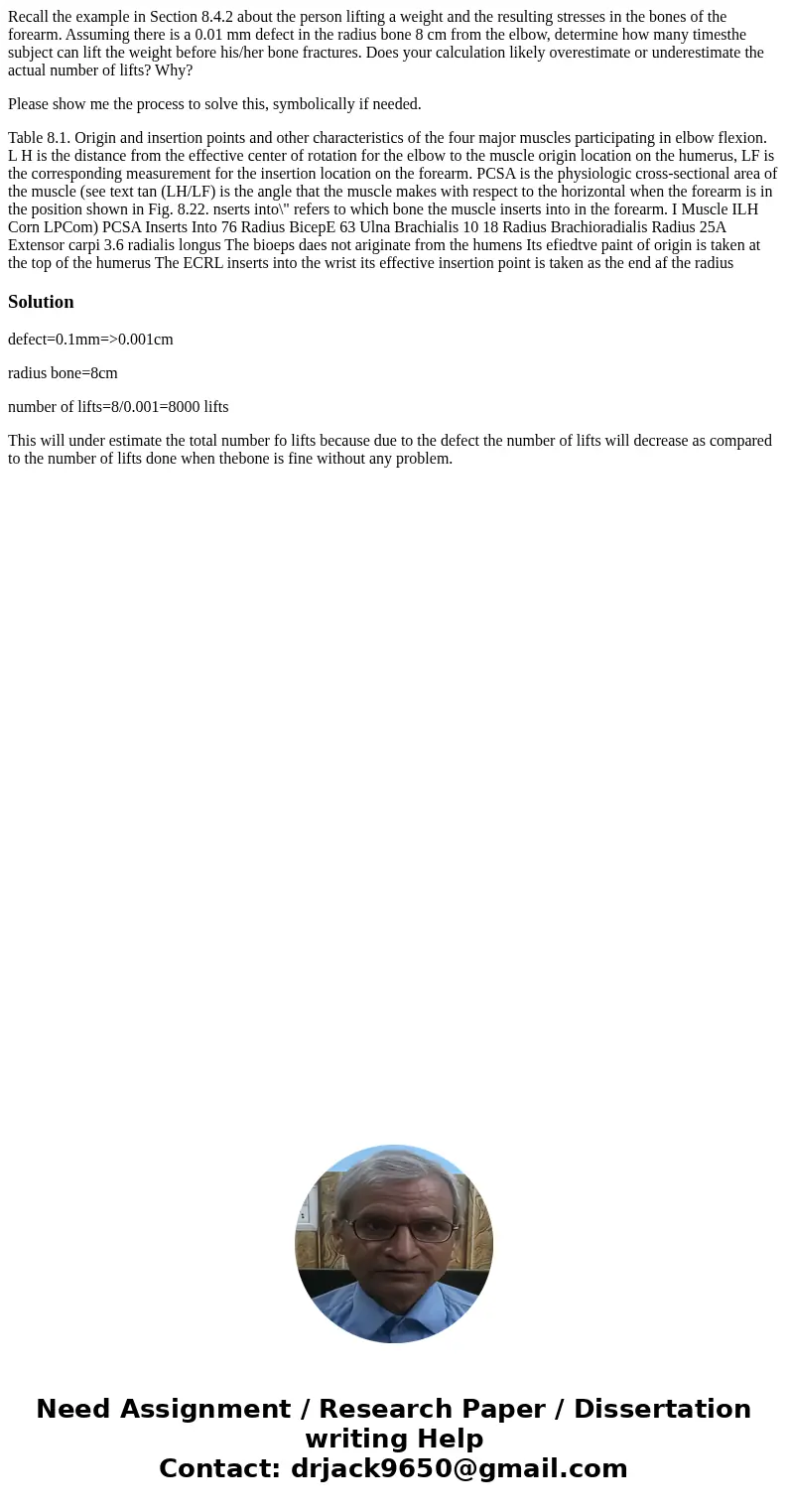Recall the example in Section 842 about the person lifting a
Recall the example in Section 8.4.2 about the person lifting a weight and the resulting stresses in the bones of the forearm. Assuming there is a 0.01 mm defect in the radius bone 8 cm from the elbow, determine how many timesthe subject can lift the weight before his/her bone fractures. Does your calculation likely overestimate or underestimate the actual number of lifts? Why?
Please show me the process to solve this, symbolically if needed.
Table 8.1. Origin and insertion points and other characteristics of the four major muscles participating in elbow flexion. L H is the distance from the effective center of rotation for the elbow to the muscle origin location on the humerus, LF is the corresponding measurement for the insertion location on the forearm. PCSA is the physiologic cross-sectional area of the muscle (see text tan (LH/LF) is the angle that the muscle makes with respect to the horizontal when the forearm is in the position shown in Fig. 8.22. nserts into\" refers to which bone the muscle inserts into in the forearm. I Muscle ILH Corn LPCom) PCSA Inserts Into 76 Radius BicepE 63 Ulna Brachialis 10 18 Radius Brachioradialis Radius 25A Extensor carpi 3.6 radialis longus The bioeps daes not ariginate from the humens Its efiedtve paint of origin is taken at the top of the humerus The ECRL inserts into the wrist its effective insertion point is taken as the end af the radiusSolution
defect=0.1mm=>0.001cm
radius bone=8cm
number of lifts=8/0.001=8000 lifts
This will under estimate the total number fo lifts because due to the defect the number of lifts will decrease as compared to the number of lifts done when thebone is fine without any problem.

 Homework Sourse
Homework Sourse